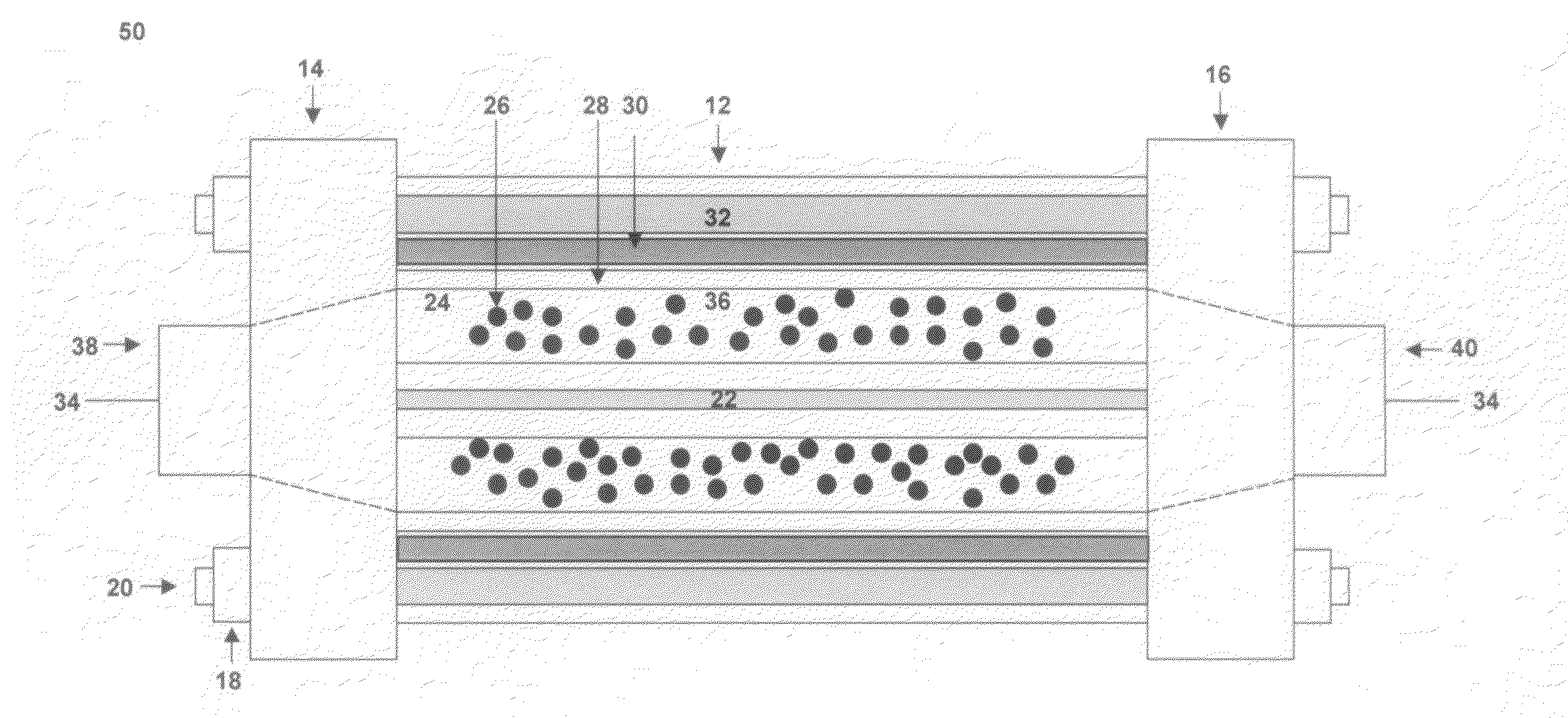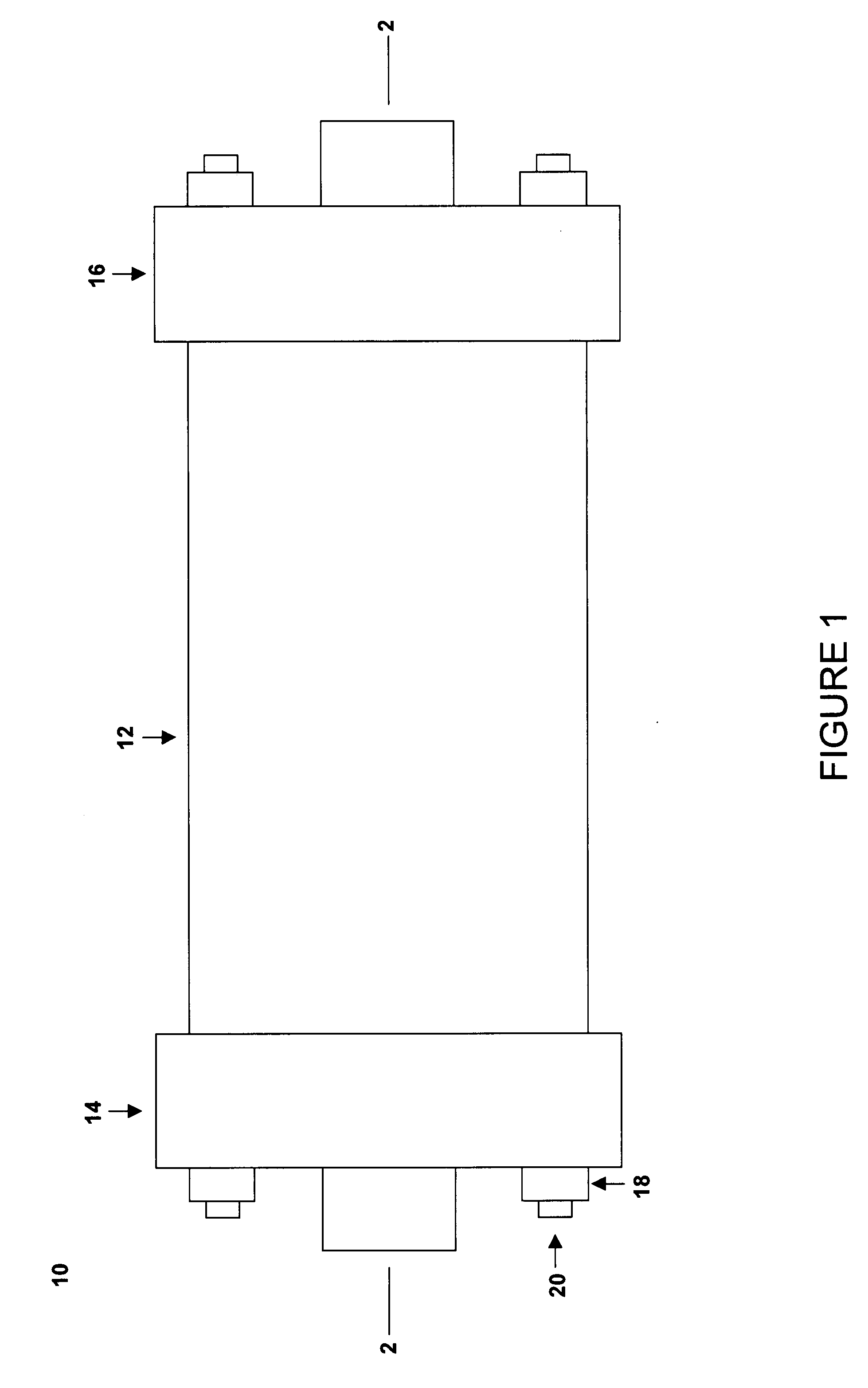Carbonaceous solid fuel gasifier utilizing dielectric barrier non-thermal plasma
a solid fuel gasifier and dielectric barrier technology, applied in gaseous fuels, gas-gas reaction processes, combustible gas production, etc., can solve the problems of high temperature, degrade the costly conventional catalysts required for practical implementation, and the environment is hostile, so as to reduce the activation energy barrier. , the effect of reducing the activation energy barrier
- Summary
- Abstract
- Description
- Claims
- Application Information
AI Technical Summary
Benefits of technology
Problems solved by technology
Method used
Image
Examples
example 1
[0038]EXAMPLE 1 is an embodiment of the invention that was similar to the system shown in FIGS. 1 and 2. The system comprised a coaxial-cylinder dielectric barrier discharge reactor and associated carbon gasifier. The high voltage electrode was a 52 centimeter (“cm”) long stainless steel wire that was inserted into a 50 cm long alumina (e.g., Al2O3) ceramic tube with a 0.5 cm outside diameter (“OD”). The grounded electrode was a 30 cm long copper mesh electrode that was placed outside a 45 cm long quartz tube with a 1.68 cm OD. A high voltage alternating current transformer (Eurocom Model 92-0152-70) operating at a frequency of about 450 Hz powered the high voltage stainless steel electrode. The carbon-containing material was an activated carbon powder with a 250 μm mean diameter. One hundred milligrams of the carbon-containing material were placed on the surface of the ceramic tube. The single-pass process stream was 99.99% by volume hydrogen gas flowing at 0.5 liters / minute (“L / mi...
PUM
| Property | Measurement | Unit |
|---|---|---|
| temperature | aaaaa | aaaaa |
| size | aaaaa | aaaaa |
| sizes | aaaaa | aaaaa |
Abstract
Description
Claims
Application Information
 Login to View More
Login to View More - R&D
- Intellectual Property
- Life Sciences
- Materials
- Tech Scout
- Unparalleled Data Quality
- Higher Quality Content
- 60% Fewer Hallucinations
Browse by: Latest US Patents, China's latest patents, Technical Efficacy Thesaurus, Application Domain, Technology Topic, Popular Technical Reports.
© 2025 PatSnap. All rights reserved.Legal|Privacy policy|Modern Slavery Act Transparency Statement|Sitemap|About US| Contact US: help@patsnap.com



